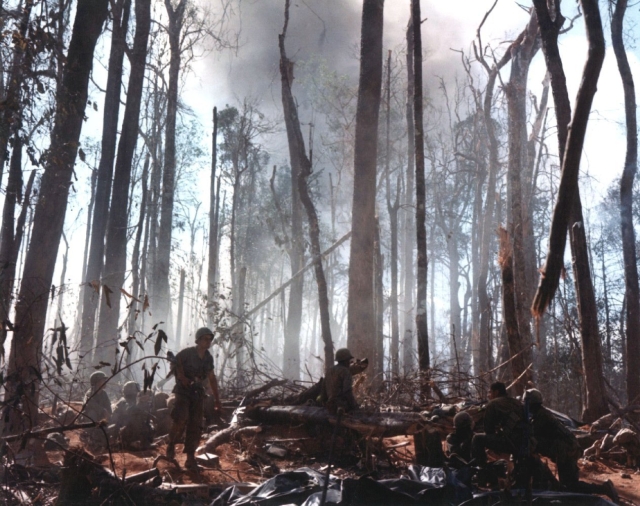“The Vietnamese didn’t care whether you were from Roxbury (black) or South Boston (Catholic). They saw you as American, and they wanted to kill you because you were American.” – Roger Harris

It is a tragedy that we often require a common foe in order to realize how similar we are. Blacks from one Boston neighborhood may have hated Catholics from another part of the city, but in war, they came together and shed the same blood, for the same cause. But while black and white Americans fought side by side in Vietnam, back in the United States, dozens were killed in race riots as the fight for civil rights intensified.
The de-humanization of the enemy became a necessary step of living with the violence inflicted by both sides. Young soldiers found it tough to kill human beings, but killing an “object” was much less difficult. Attaching hatred to these “objects” made the act of killing one even easier, and the more scared a soldier was of the enemy, the more he hated it.

A strength of the episode were the dual perspectives of a battle in the demilitarized zone (The irony is not lost on me), with a soldier from each side talking about it from his point of view. As awful a day as it was for the marines, the North Vietnamese suffered far higher casualties in “winning” the battle. So often, we grow up learning about one side of historical events; The Roman perspective at Carthage, the British perspective at Waterloo, the French perspective at Verdun, or the American perspective at D-Day. While we can debate the political justice of various regimes, the individual soldiers bearing the brunt of the horrors of war are often as far removed from the decision-making process as the ordinary citizens.
In 1967, no candidate who wanted to end the war was allowed to run in the South Vietnamese elections. Adding to a growing list of infractions, the United States was manipulating a foreign government, in defiance of the principles of self-determination, sovereignty, and democracy, which the U.S. holds so dear in its own elections. In a corresponding act, North Vietnamese communist leader, Le Duan, consolidated his power by removing those opposed to his military plans, and temporarily sending other powerful figures like Ho Chi Minh abroad.
In the United States, anti-war protests continued, culminating in a 50,000-person march from the Lincoln Memorial to the Pentagon. While protesters could view American military personnel sympathetically, the Government itself became an enemy in the eyes of many. Secretary of Defense Robert McNamara, having lost confidence in the war, and favoring a withdrawal, was removed from office. While it seems he did his best to win the war while in office, one can fault him for both supporting it in the first place, and then not publicly voicing his doubts when it still could have made a difference.

As the war continued, troops fought battle after battle over territory which could not be held, and which did not have strategic value, only to be immediately relocated either to never return, or worse, to return again and again to fight over the same ground.
Click here to go to The Vietnam War documentary’s home page.















